Japanese Artists on the Rise: Inside “matsuri '25” in Los Angeles with Ado, ATARASHII GAKKO!, and YOASOBI
 Ado(Photo by Viola Kam[V'z Twinkle])
Ado(Photo by Viola Kam[V'z Twinkle])
In recent years, Japanese artists have been making remarkable strides on the global stage. Artists like YOASOBI, Fujii Kaze, Ado, Kenshi Yonezu and LiSA, who already enjoy immense popularity in Japan, are steadily making inroads abroad. Their global appeal extends beyond streaming hits, with electrifying performances as part of international tours and celebrated festivals, captivating local audiences in the process.
Traditionally, Japanese artists going global meant expanding into other Asian countries. But now, the focus is broadening to go further, including into Western markets. Reflecting this shift, CEIPA (Japan Culture and Entertainment Industry Promotion Association) and the TOYOTA GROUP organized a global music showcase “matsuri ‘25: Japanese Music Experience LOS ANGELES supported by CEIPA × TOYOTA GROUP ‘MUSIC WAY PROJECT’.”
Held in March 2025 at the Peacock Theater in Los Angeles, the event featured three leading Japanese acts — Ado, ATARASHII GAKKO!, and YOASOBI. All 7,000 tickets sold out in advance, underlining the growing momentum of Japanese artists on the global stage. In this article, we report the event and explore why Japanese artists are increasingly influential overseas.
By Nakanishi Que
Live Report: “matsuri ‘25: Japanese Music LOS ANGELES”
YOASOBI
Even before the show started, the crowd buzzed with anticipation while waving lightsticks. As the lights at the venue dimmed and “YOASOBI” flashed across the massive screen, the crowd erupted into cheers.
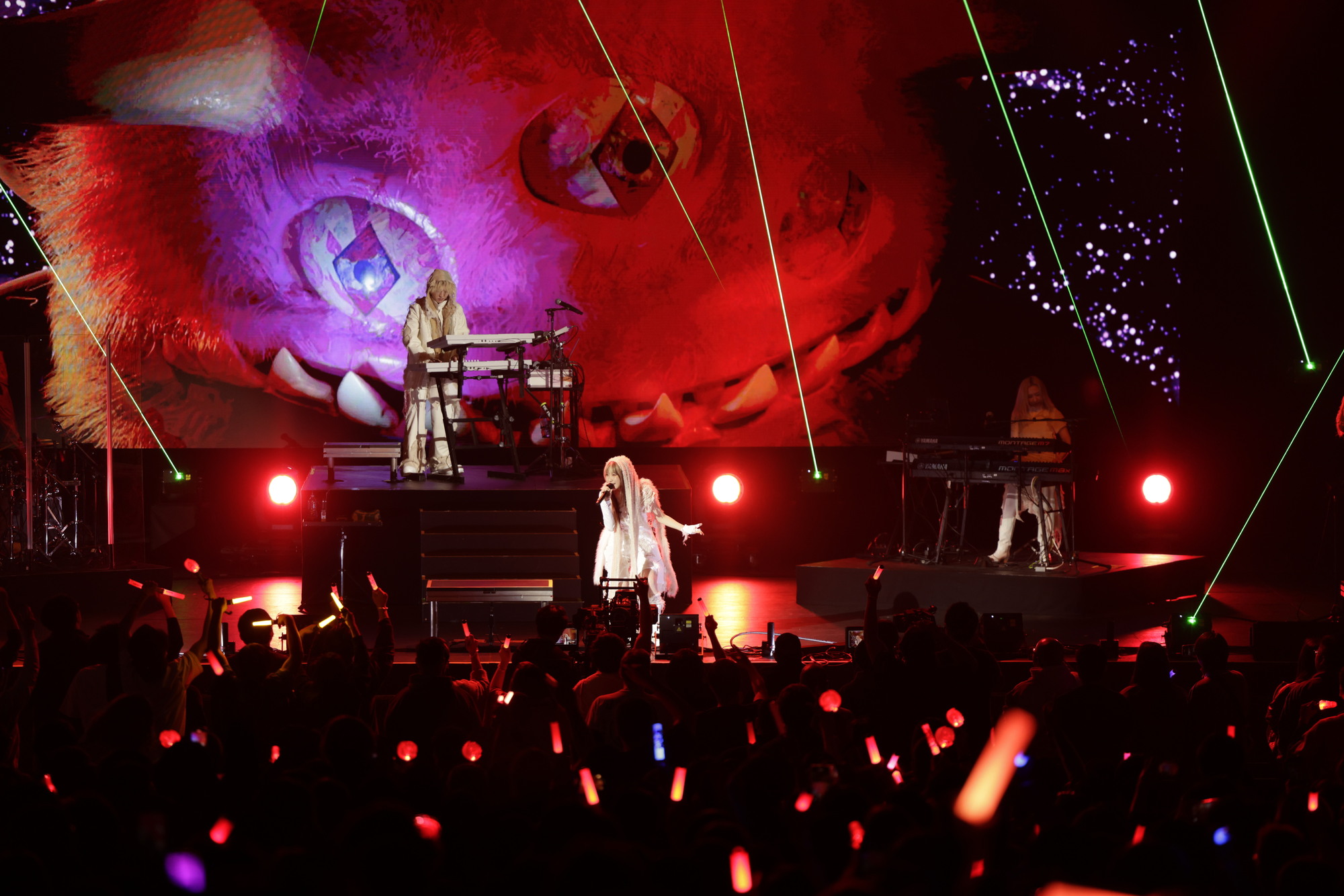
With an eerie intro guiding them in, the backing band took their positions. Moments later, Ayase and ikura emerged on a stage lined with keyboards, both wearing white. “Welcome to matsuri ‘25! We are YOASOBI!” shouted ikura as the show kicked off with “Seventeen.”
From the first beat, ikura’s angelic voice and flawless control sent the audience into a frenzy. The duo powered through cuts such as “The Blessing” and “UNDEAD” before breaking into fan favorites “Haven’t” “The Brave”, and “Monster.” Each song showcased the versatility and emotional range defining YOASOBI's unique world of music.
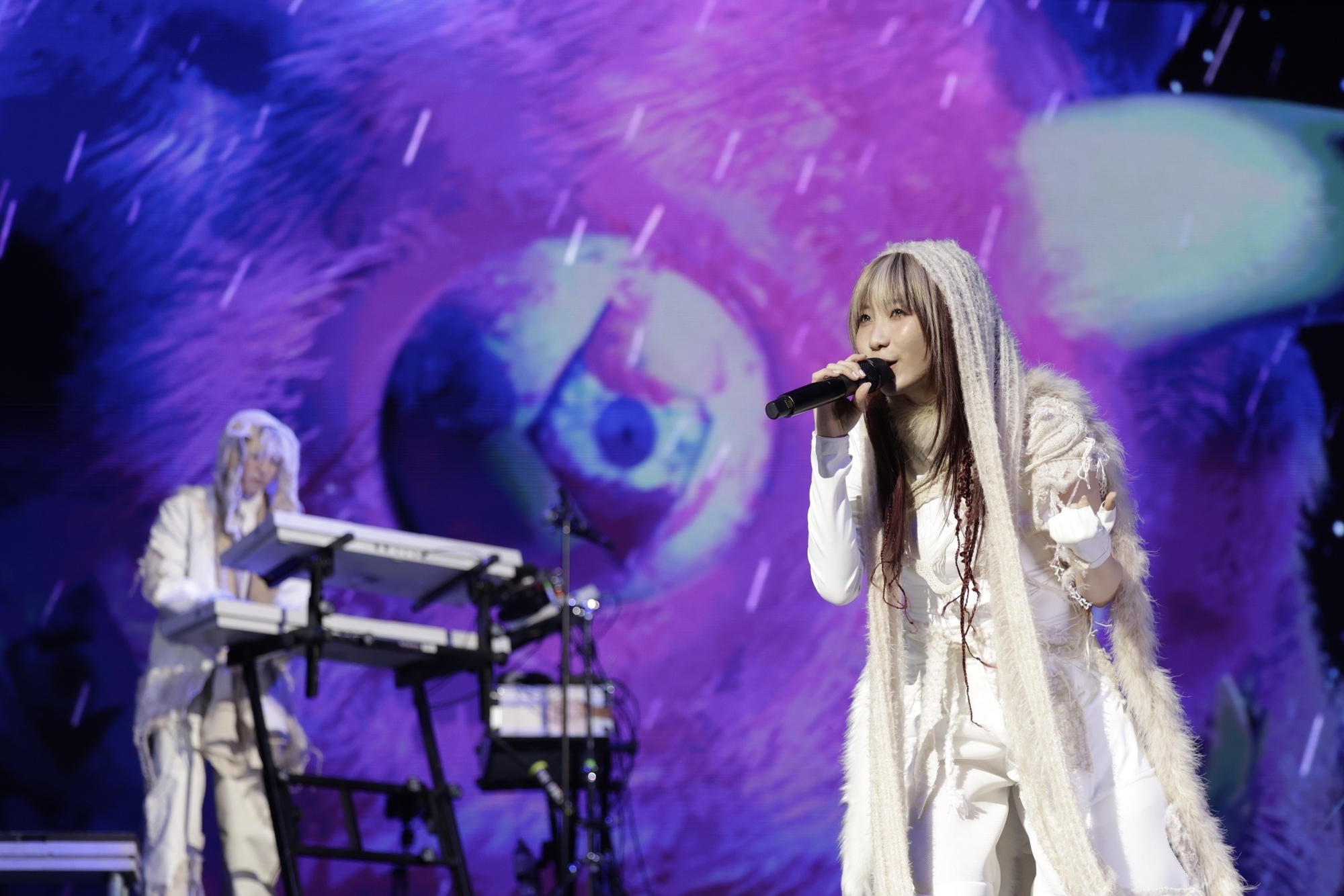 YOASOBI(Photo by YURI HASEGAWA)
YOASOBI(Photo by YURI HASEGAWA)
“We’ve worked hard to share our music to the world as J-pop artists, so it’s such a joy to be here with all of you,” ikura said in English, drawing huge applause. YOASOBI wrapped up the show with “Into the Night,” sparking a full-venue sing-along with “Blue,” and closing with “Idol” pushing the crowd’s energy to its peak.
ATARASHII GAKKO!
Next up was ATARASHII GAKKO! As the lights dimmed again, a nostalgic Japanese school bell rang out, followed by the sound of drums. From the back of the audience seats, SUZUKA, MIZYU, KANON, and RIN marched proudly through the crowd, waving a flag.
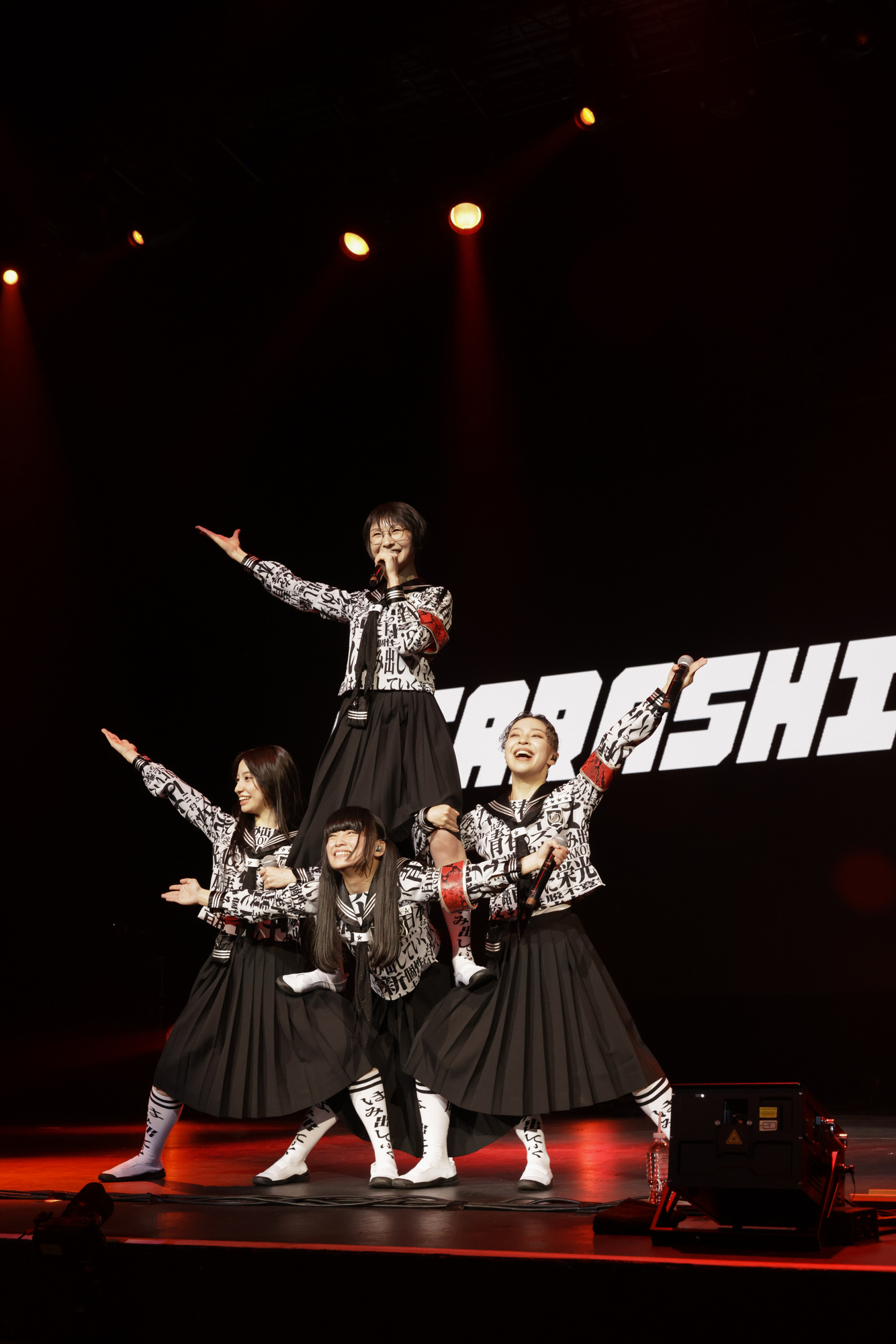 ATARASHII GAKKO!(Photo by YURI HASEGAWA)
ATARASHII GAKKO!(Photo by YURI HASEGAWA)
Arriving on stage, the members lined up in a fierce stance. A trumpet played, SUZUKA shouted “We are ATARASHII GAKKO!” Then, in perfect sync, they dropped low to the ground, moving rhythmically to her voice of “Ch-ch-ch-ch-Change!” — the opening song “Change” kicked off the high-energy set.
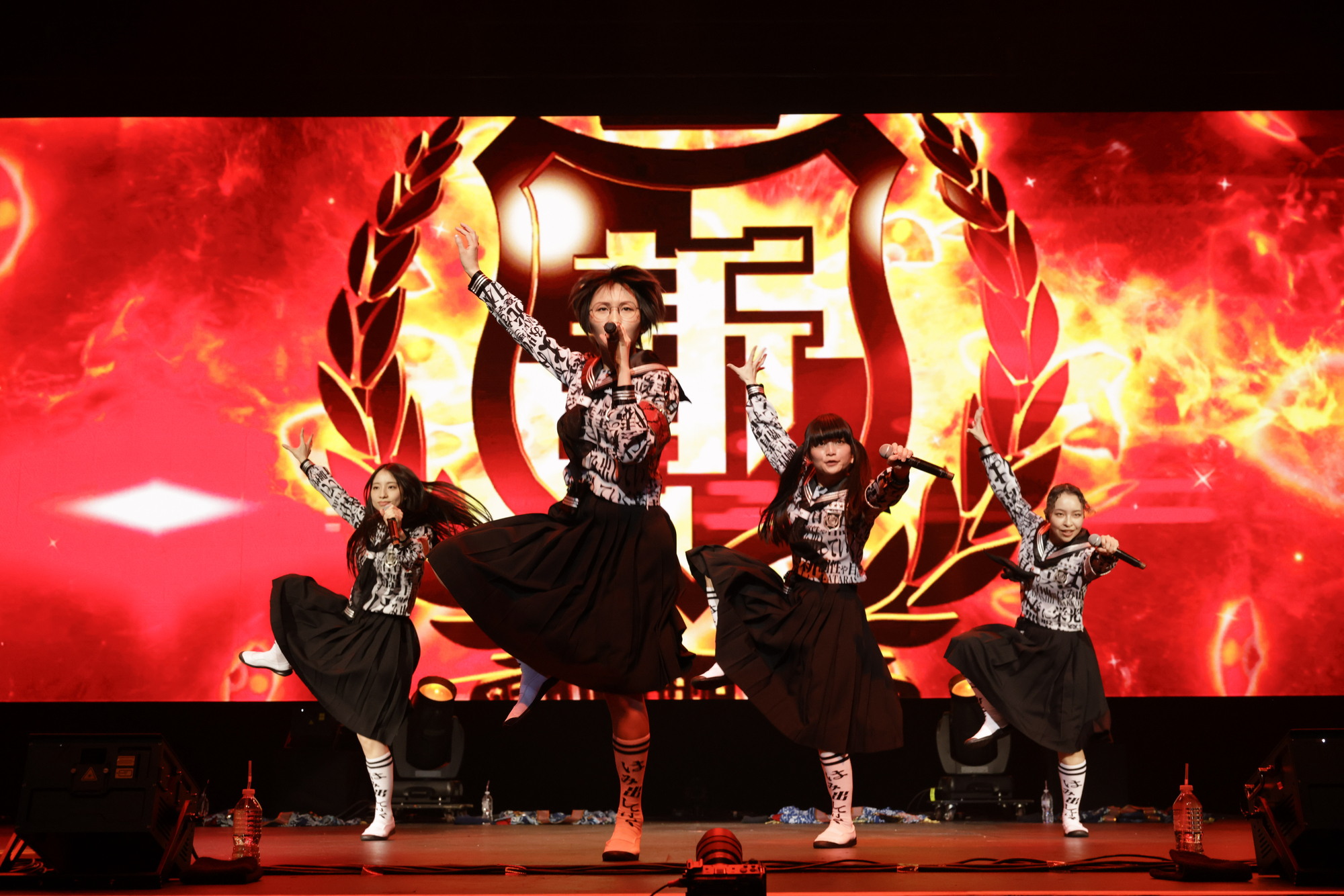 ATARASHII GAKKO!(Photo by YURI HASEGAWA)
ATARASHII GAKKO!(Photo by YURI HASEGAWA)
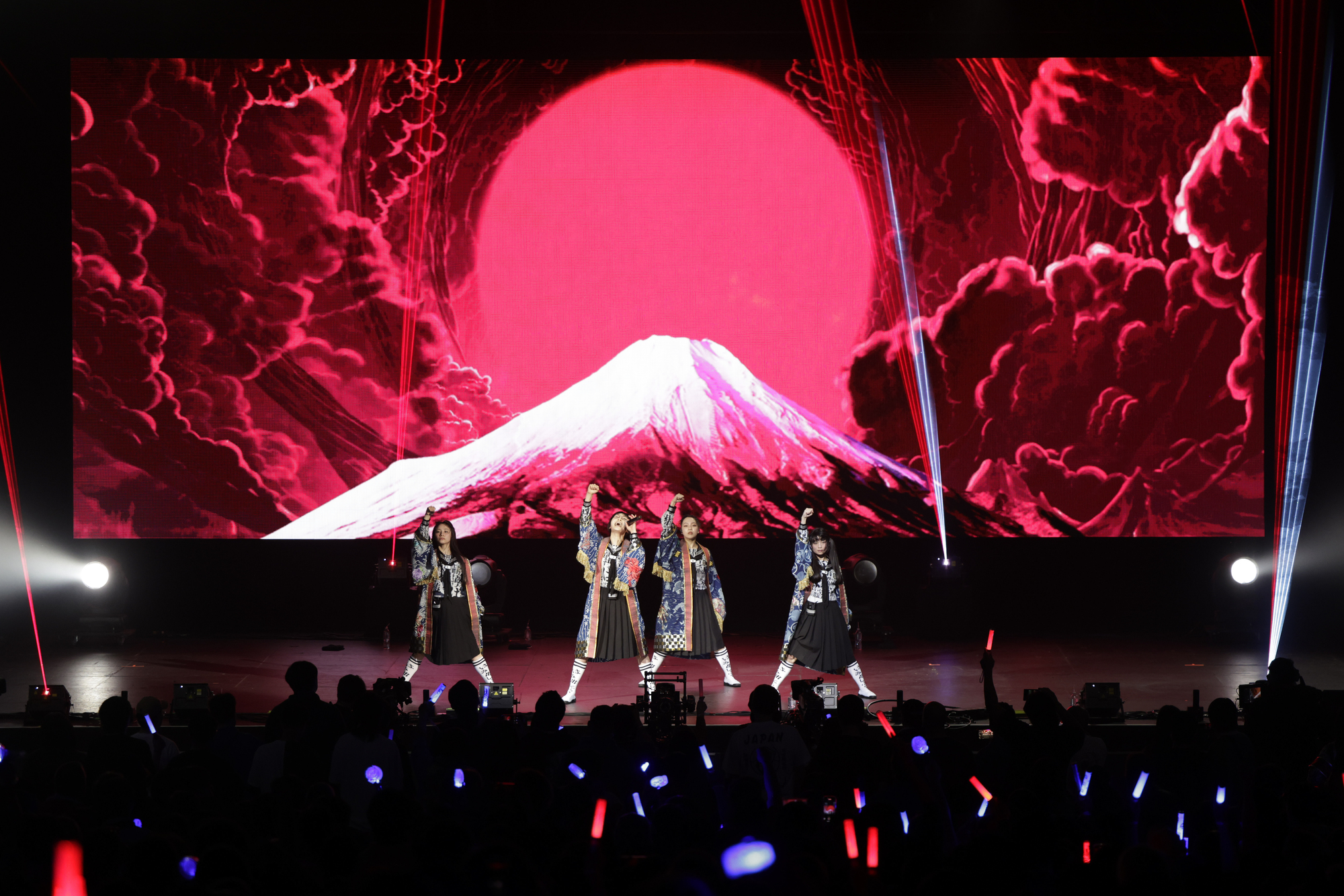 ATARASHII GAKKO!(Photo by YURI HASEGAWA)
ATARASHII GAKKO!(Photo by YURI HASEGAWA)
From “Change” to “Fly High” and “OTONABLUE,” ATARASHII GAKKO! blended edgy dance beats with retro disco grooves, creating a uniquely electro-kayo vibe full of coolness and humor. Their set was a spectacle, including song, rap, dance, MC, call and response, acrobatics, and even crowd-surfing by SUZUKA, all of which had the venue in full excitement.
Ado
Closing out the show was Ado, appearing in silhouette within her iconic box as the opening notes of “Show” echoed through the venue. She appeared backed by cinematic visuals, drawing explosive cheers from the crowd of around 7,000, swept up in the drama of her entrance.
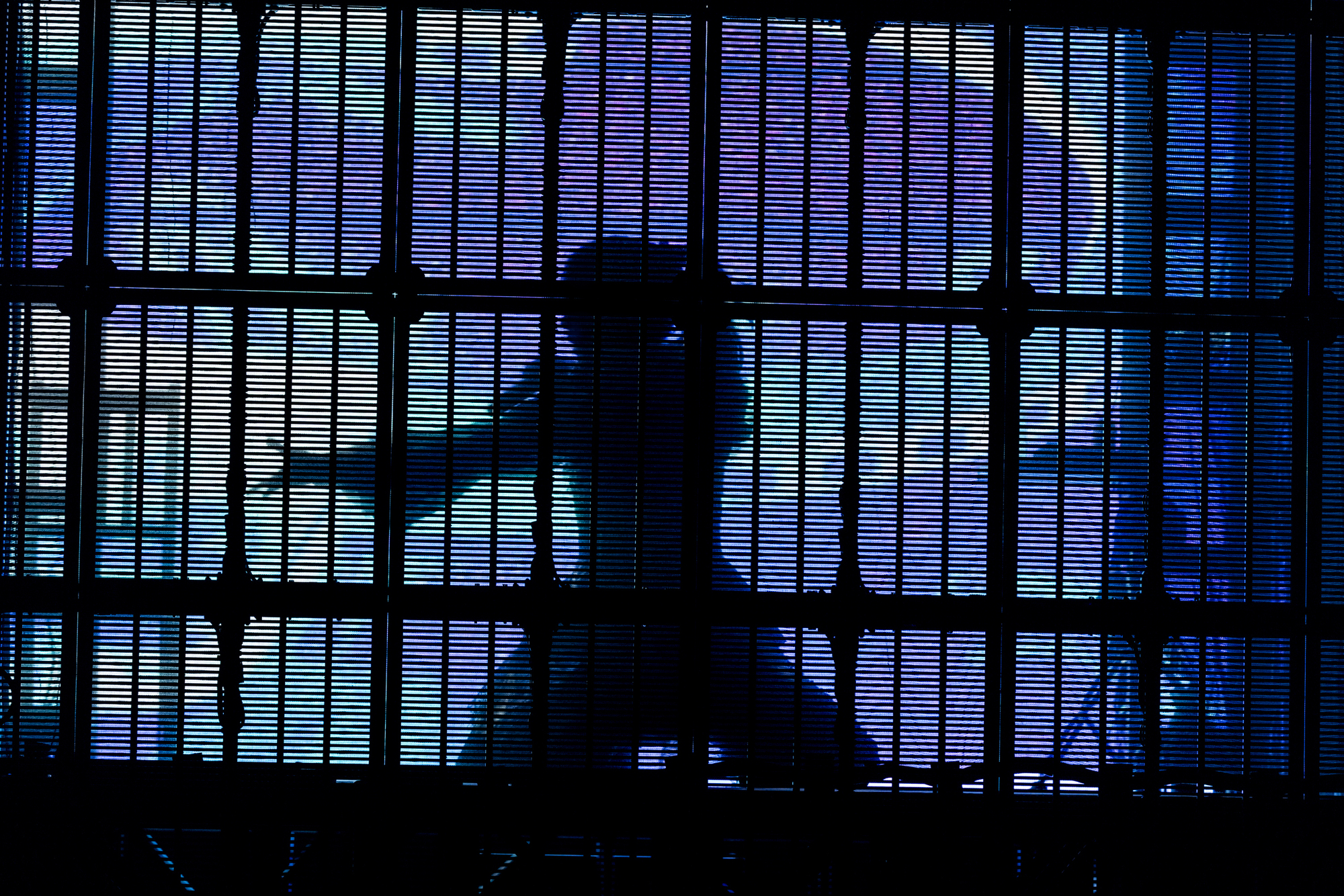 Ado(Photo by Viola Kam[V'z Twinkle])
Ado(Photo by Viola Kam[V'z Twinkle])
She fired off hits from the start, rolling through “New Genesis” and “Usseewa.” Instantly commanding the attention of the entire venue, she lay down while singing “Luchy Brute,” headbanging in a chair during “Lulu,” and unleashing raw screams for “Aishite Aishite Aishite.” The audience responded with pure energy to Ado and her band members technically intricate performance.
Ado’s electrifying performance wasn’t just about her powerful and haunting vocals, but it was a multisensory experience. With every beat, her long ponytail hairs swayed and elegant costume flowed in mesmerizing motion, captivating the audience not only through sound but visually as well.
Having spent a month in Los Angeles in 2024, Ado told the crowd “I’m so happy to be back in LA. I’m going to grab an In-N-Out Burger before I leave,” to the delight of her local fans. She went on to say, “It feels like a dream to share the stage with artists I love — ATARASHII GAKKO! And YOASOBI. They’re comrades who proudly bring Japanese culture and music to the world. I truly believe that Japanese music will reach more and more people globally. So everyone here today are my precious companions. Please continue to love and support Japanese music and culture.” Her message was met with powerful applause.
Ado wrapped up her set with “Odo,” bringing the performance to a spectacular close. Even after the final note, the audience remained energized and their faces glowing with satisfaction, cheers echoing long after she left the stage.
Why Are Japanese Artists Gaining Global Popularity Now?
Of course, there have been Japanese artists in the past who found success abroad. In 1963, for example, Kyu Sakamoto famously topped the U.S. Billboard chart for three consecutive weeks. In the 1970s, the Sadistic Mika Band captivated British youth, while YELLOW MAGIC ORCHESTRA sparked a worldwide technopop movement in the late ‘70s followed by Ryuichi Sakamoto winning both a Grammy and an Academy Award for his film scores in the ‘80s.
In YMO’s wake, many other Japanese artists representing a range of sounds and styles attempted crossovers into the international pop space. Results were mixed, with some acts establishing loyal fandoms and major success, but other cases often feeling like sporadic breakthroughs rather than sustained hits. This was complicated by challenges many listeners outside of Japan faced even being able to hear the music. There just weren't many easy ways to access J-pop.
The trends began to change around 2020 during the COVID-19 pandemic. The consumption of digital content exploded and drastically increased the exposure of Japanese music to a global audience via the internet, with more Japanese music new and old suddenly available online.
One of the biggest drivers of this growth is anime. With the rise of video streaming culture during the pandemic, Japanese anime began reaching a broader international audience, not just core anime fans, but general viewers around the world. At the same time, anime songs and Japanese pop music started gaining a favourable reputation globally. This boom was also supported by a global revival of interest in 1980s Japanese city pop, which had already begun spreading in the late 2010s. In various ways, these overlapping trends helped to shape a general impression among global listeners that “Japanese pop music is cool.”
So what exactly is it about Japanese music that makes it so popular overseas?
It’s often said that the complexity and detailed song structures unique to Japanese pop music, the seamless fusion of multiple music genres into a hybrid style, and the emotionally rich, melodic lines rooted in traditional kayo — the name for Japanese pop songs from the Showa Era (1926 to 1989(. For many global listeners, these qualities feel refreshingly different and compelling compared to other global pop trends.
Today’s music landscape is dominated by streaming platforms and social media.
The next generation of artists is growing up in an environment where they can access music from any era and every corner of the world without barriers of time or geography.
Many of these emerging artists are naturally developing a more global sensibility than previous generations of musicians. As this trend continues, it can be expected that the world wide appreciation for Japanese music will continue to grow at an even faster pace.
CEIPA x TOYOTA GROUP “MUSIC WAY PROJECT”
The market for entertainment content is expanding with lifestyle changes brought on by the COVID-19 pandemic and the rise of the streaming business, and Japanese culture is capturing international attention. As Japanese content continues to excite people around the world, CEIPA and the TOYOTA GROUP will co-create a pathway for young people who are pioneering the future of Japanese music to drive the fundamental globalization and sustainable growth of Japanese music: the MUSIC WAY PROJECT. The MUSIC WAY PROJECT will provide opportunities for young talent to thrive and make a greater impact under the slogan “Japanese music drives the world.”